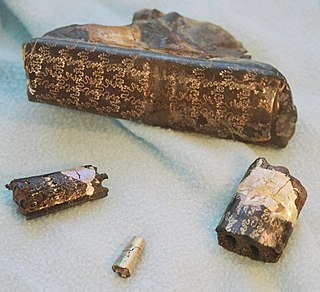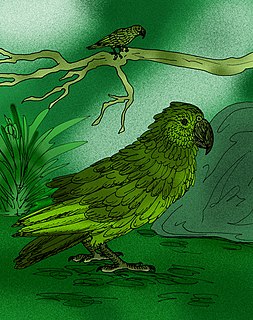 W
WBaculites is an extinct genus of cephalopods with a nearly straight shell, included in the heteromorph ammonites. The genus, which lived worldwide throughout most of the Late Cretaceous, was named by Lamarck in 1799.
 W
WOtodus angustidens is a species of prehistoric megatoothed sharks in the genus Otodus, which lived during the Oligocene and Miocene epochs about 33 to 22 million years ago. This shark is related to another extinct megatoothed shark, Otodus megalodon.
 W
WFavosites is an extinct genus of tabulate coral characterized by polygonal closely packed corallites. The walls between corallites are pierced by pores known as mural pores which allowed transfer of nutrients between polyps. Favosites, like many corals, thrived in warm sunlit seas, feeding by filtering microscopic plankton with their stinging tentacles and often forming part of reef complexes. The genus had a worldwide distribution from the Late Ordovician to Late Permian.
 W
WGlossopteris is the largest and best-known genus of the extinct Permian order of seed ferns known as Glossopteridales. The genus Glossopteris refers only to leaves, within a framework of form genera used in paleobotany. Species of Glossopteris were widespread over the supercontinent of Gondwana during the Permian epoch, where they formed the dominant component of high latitude polar forests. Glossopteris fossils were critical in recognizing former connections between the various fragments of Gondwana: South America, Africa, India, Australia, New Zealand, and Antarctica.
 W
WHeracles inexpectatus is a giant fossil parrot species from New Zealand, assigned to a monotypic genus Heracles, that lived during the early Miocene approximately 16 to 19 million years ago. The species was described from fossils discovered in 2008 at Saint Bathans, Otago, New Zealand. It is believed that the species stood up to 1 m tall and weighed approximately 7 kg (15 lb). Initial analysis suggests it is from the superfamily Strigopoidea, which consists of three confirmed genera of parrots: Nestor, Strigops (kakapo) and the fossil Nelepsittacus.
 W
WHindeodus is an extinct genus of conodonts in the family Anchignathodontidae. The generic name Hindeodus is a tribute to George Jennings Hinde, a British geologist and paleontologist from the 1800s and early 1900s. The suffix -odus typically describe’s the animal’s teeth, essentially making Hindeodus mean Hinde-teeth.
 W
WKumimanu is an extinct species of giant penguin, which lived around 60 to 56 million years ago. The species arose after the extinction of the non-avian dinosaurs. Fossils were found in New Zealand, and the discovery was announced in December 2017.
 W
WLeptaena is an extinct genus of mid-sized brachiopod that existes from the Dariwilian epoch to the Emsian epoch, though some specimens have been found in strata as late in age as the Tournasian epoch. Like some other Strophomenids, Lepteana were epifaunal, meaning they lived on top of the seafloor, not buried within it, and were suspension feeders.
 W
WOtekaikea is an extinct genus of toothed whale closely related to Waipatia. It is known from the late Oligocene (Chattian) of New Zealand.
 W
WPlatypterygius is an ichthyosaur of the family Ophthalmosauridae. It is most closely related to the genera Caypullisaurus and Brachypterygius. The ichthyosaur lived from the Early Cretaceous (Hauterivian) to the earliest Late Cretaceous (Cenomanian) and had a cosmopolitan distribution.
 W
WThe St Bathans fauna is found in the lower Bannockburn Formation of the Manuherikia Group of Central Otago, in the South Island of New Zealand. It comprises a suite of fossilised prehistoric animals from the late Early Miocene (Altonian) period, with an age range of 19–16 million years ago.
 W
WTangaroasaurus is an extinct genus of squalodontid whale from the Miocene of New Zealand. It contains a single species, Tangaroasaurus kakanuiensis. Similar to Basilosaurus and its close relative Squalodon, it was originally thought to be a species of marine reptile. Parts of the Holotype are presumably lost. Its name comes from Tangaroa, the Maori god of the sea, while the suffix -saurus comes from the Latin word for reptile, the group that Tangaroasaurus was originally placed in.